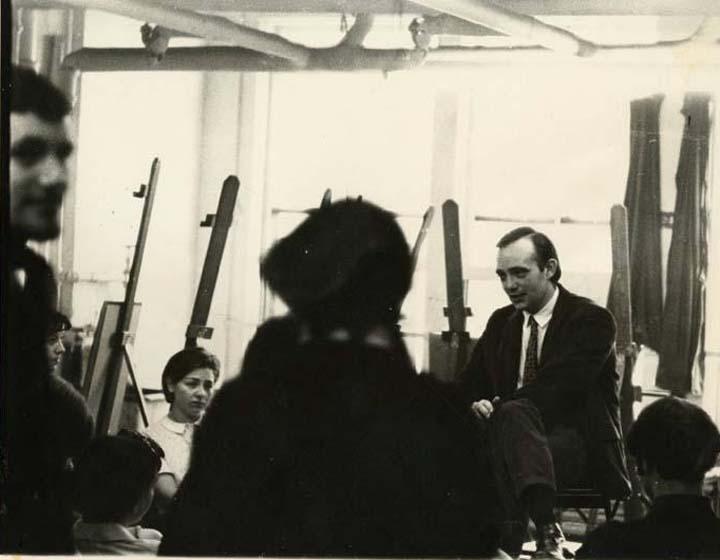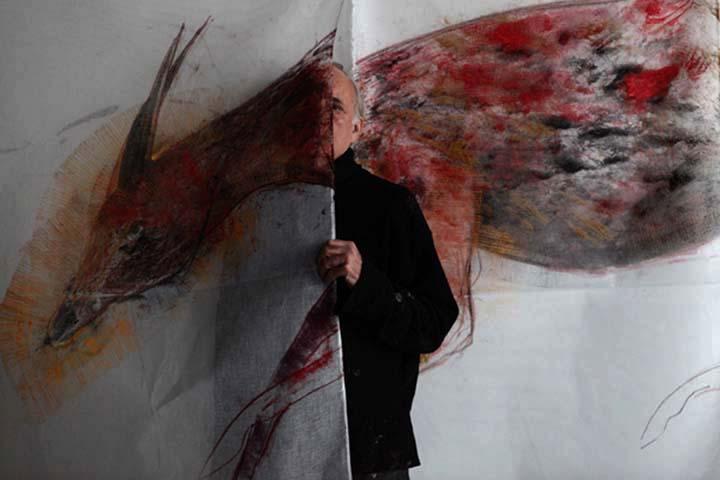Marshall Arisman: We Tell Stories

Marshall Arisman, chair of the School of Visual Arts graduate program Illustration
as Visual Essay, which he initiated in 1984, celebrates the program’s 30th anniversary this year. An exhibition of over 350 works by its graduates opened this week at SVAs
Chelsea Gallery, where an artists’ reception will take place next Tuesday. Following is an excerpt from the publication for the show.
Writing is easy: all you do is sit staring at a blank sheet of paper until the drops of blood form on your forehead. —Gene Fowler
Stories tend to be based on experimental learning, but learning from experience is not automatic. Flannery O’Connor said, “Anyone who survived childhood had enough to write about for the rest of his life.”
The mid-90s—computer-generated images, the Internet, photography, stock illustrations and budget cuts—prompted many illustrators to pronounce illustration dead. The period when illustrations were the predominant visuals for magazine had long past, but storytelling in all its forms was undergoing a resurgence. The illustrator/storyteller was coming of age.
In the graduate program [at SVA] the key to storytelling was to engage the illustrator as a writer. Annie Dillard, in her book, The Writing Life, offers the following, “Putting a book together is interesting and exhilarating. It is sufficiently difficult and complex that it engages all your intelligence. It is life at its most free. Your freedom as a writer (storyteller) is not freedom of expression in the sense of wild blurting; you may not let rip. It is life at its most free, if you are fortunate enough to be able to try it, because you select your materials, invent your task, and pace yourself. In the democracies, you might even write and publish anything you please about any governments or institutions, even if what you write is demonstrably false.”
The illustrator/storyteller brings words and images together to create a new art form. That is if the storytelling and the picture-making are equally excellent. They share a demand to be personal, provocative, unique and work together to enhance the concept. For most illustrators it means starting from scratch. For some, the writing comes as naturally as the drawing. For others, the visuals take prominence and the work demands finding a way to integrate both words and pictures to tell a story that is less effective without both elements….
As those who have both drawn and written know, the problem of the illustration merely copying the words is always present. However, even the student who does not write well finds that their ability to illustrate becomes more explorative and original. The history of writers and artists is an uneven journey. —Marshall Arisman
An artists’ reception for We Tell Stories will take place Tuesday, November 11, from 6 to 8 pm at the SVA Chelsea Gallery. 601 West 26th Street, 15th Floor, NY, NY. Information. Illustration as Visual Essay information. Illustration as Visual Essay faculty. Marshall Arisman in DART: 2014; 2012; 2008.
Photo above, Marshall Arisman conducting his first School of Visual Arts illustration class, 1964. Photo below: Marshall Arisman in his studio, 2012.

Marshall Arisman is an illustrator, painter, educator and storyteller. His illustrations have appeared in virtually every national publication including covers for Time, U.S. News and World Report, The Nation, and The Progressive. His paintings are in the permanent collection of the Brooklyn Museum, the Metropolitan Museum of Art (print collection), the New-York Historical Society, the Guangdong Museum of Contemporary Art, and the Smithsonian Institution.
He has been teaching and chairing departments at the School of Visual Arts since 1965. He is currently chair of the graduate program Illustration as Visual Essay, which he initiated in 1984. He is a co-founder of American Illustration, with Edward Booth-Clibborn, Sue Coe, Robert Priest, Julian Allen, and Steven Heller.


